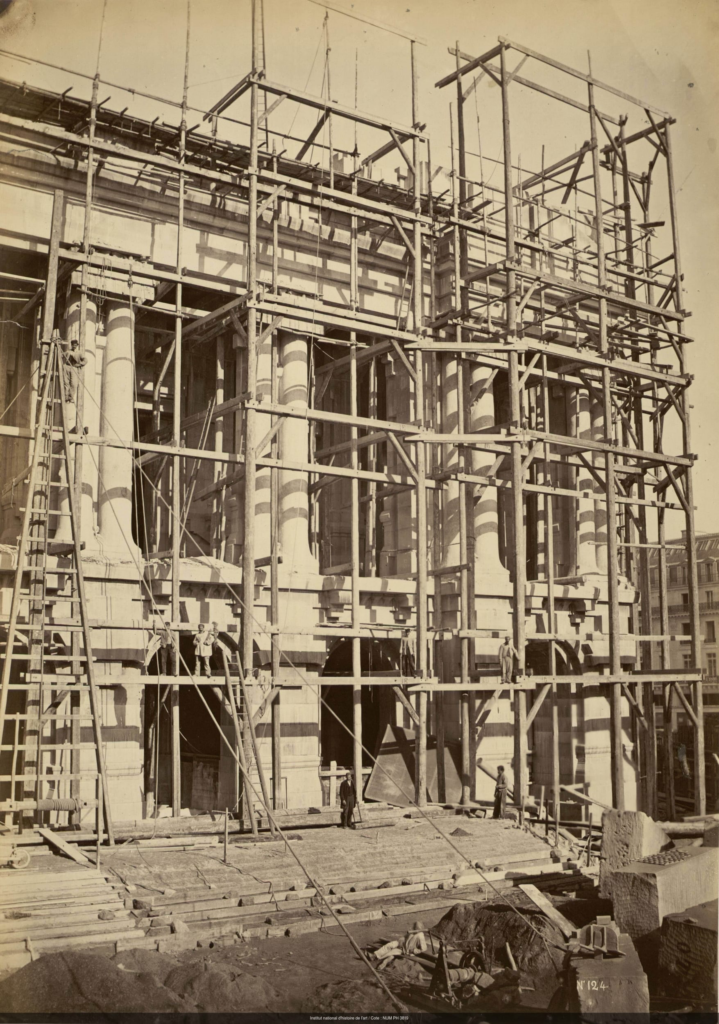Parisian Icons: Palais Garnier
stories
In the heart of Paris, the Palais Garnier stands as a symbol of opulence, elegance, and architectural brilliance. Designed by Charles Garnier in the 19th century, this grand structure is not only one of the most famous landmarks in Paris but also a stunning example of how art and architecture can combine to create something truly timeless. For interior designers, the Palais Garnier offers a wealth of inspiration, from its rich history to its intricate design details. It’s a shining example of the finest interior design Paris has to offer.
The History of Palais Garnier

Image credit: Opera de Paris
Commissioned by Emperor Napoleon III in 1861 as part of a broader plan to modernise Paris, the Palais Garnier was designed to become the centrepiece of the city’s cultural life. Charles Garnier, then a relatively unknown architect, was chosen to bring this vision to life. However, the construction process wasn’t without its challenges. Delays caused by the Franco-Prussian War, the fall of the Second Empire, and the Paris Commune meant that the building wasn’t completed until 1875.
When it finally opened, the Palais Garnier was immediately recognised as a masterpiece, not just of architecture, but of design. It quickly became the go-to venue for opera, ballet, and other high-society events, attracting royalty, aristocrats, and cultural elites from all over Europe.
The Beaux-Arts Design of Palais Garnier

Image source: Arts in The City
The Palais Garnier is an outstanding example of Beaux-Arts architecture, a style that was dominant in France during the 19th century. This highly ornate style combines elements of Renaissance and Baroque architecture, with lavish decorative details that are truly awe-inspiring. The sheer scale and grandeur of the Palais Garnier are breathtaking, and it remains one of the best examples of the French architectural style in the world.
One of the most iconic features is the Grand Staircase, a sweeping double staircase made of white marble, with accents of red and green marble on the balustrades. The staircase leads to the grand foyer, a space so lavish that it feels more like a royal palace than an opera house. Crystal chandeliers, gilded mirrors, and intricately carved columns all contribute to an atmosphere of unparalleled luxury.
Inside the auditorium, the design continues to impress. Red velvet seating, a ceiling painted by the artist Marc Chagall, and an enormous crystal chandelier, weighing over seven tonnes, dominate the space. Every detail speaks to a level of extravagance that has become synonymous with Paris interior design.
The High Cost of Grandeur

Such luxury came at a steep price. While the original budget for the Palais Garnier was estimated at 7 million francs, the final cost was over 36 million francs, a staggering sum for the time. Despite the spiralling costs, no expense was spared in creating one of the most elaborate buildings of the 19th century, and the result is a structure that continues to stand as a testament to the wealth and artistic vision of the Second Empire.
Famous Faces at Palais Garnier

Image credit: Opera de Paris
The Palais Garnier has always been associated with the world’s most famous performers. Opera legends such as Maria Callas and Luciano Pavarotti have graced its stage, along with renowned ballet dancers like Rudolf Nureyev. Composers including Giuseppe Verdi and Richard Wagner have also had their works performed here, further cementing the opera house’s status as a cultural hub.
Over the years, the Palais Garnier has also welcomed royalty, politicians, and celebrities, making it one of the most glamorous venues in the world. It’s not just a place to see a performance—it’s a place to be seen.
The Palais Garnier on Screen
The Palais Garnier has not only been a landmark for live performances but has also made its mark on the silver screen. Perhaps its most famous association is with Gaston Leroux’s novel The Phantom of the Opera, which was inspired by the opera house. This story has been adapted into countless films, plays, and musicals, most notably Andrew Lloyd Webber’s internationally renowned production.
Other films that have featured at the Palais Garnier include Woody Allen’s Midnight in Paris and The Danish Girl. Its grand interiors and lavish design make it a popular filming location, capturing the timeless elegance that defines Parisian interior design.
Timeless Inspiration for Paris Interior Design
The Palais Garnier is more than just a historic building—it’s a living example of Parisian style. Its blend of marble, gold leaf, intricate detailing, and luxurious fabrics continues to inspire interior designers around the world. For anyone looking to recreate the opulence of the Palais Garnier in their own home or project, the key lies in a careful balance of luxury, symmetry, and craftsmanship. The building serves as a perfect example of how interior design in Paris combines history with a modern sense of elegance.
Whether you’re visiting the city to take in its cultural landmarks or seeking inspiration for your own design projects, the Palais Garnier remains a must-see. It’s a building that tells the story of Paris, through its architecture, its history, and its unparalleled dedication to beauty.
To see more from us, our news stories and blog posts, follow the link HERE. Additionally, if you want to keep up to date with the progress of our projects you can follow us on Instagram. We regularly post updates on our international projects!



